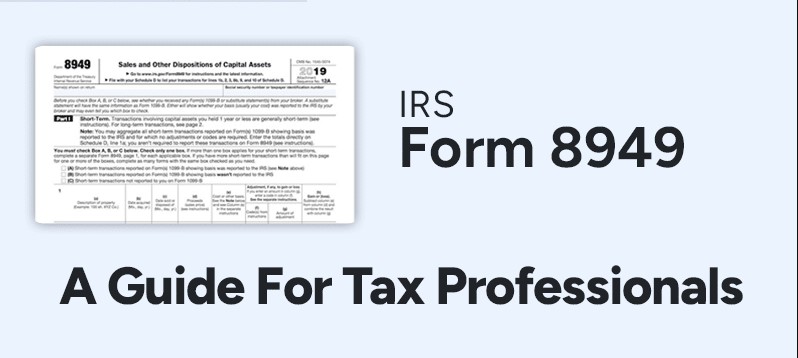Form 8949 with Syed Professional Services
Tax season can be particularly complex for investors, especially when reporting capital gains and losses. Form 8949, the Sales and Other Dispositions of Capital Assets, plays a vital role in this process. This informative guide by Syed Professional Services explores Form 8949, explaining its purpose, the information it captures, and how it impacts your tax return. We’ll also highlight how our team of tax professionals can ensure accurate and efficient reporting of your capital gains and losses.
Understanding Capital Gains and Losses
When you sell an investment asset, such as stocks, bonds, or real estate, for more than you paid for it, you realize a capital gain. Conversely, you incur a capital loss if you sell an asset for less than you paid. These gains and losses impact your taxable income and need to be reported to the IRS.
What is Form 8949, and When Do I Need It?
Form 8949 serves as a schedule attached to your tax return (typically Form 1040) to report all your capital gains and losses from selling investment assets during the tax year. You generally need to file Form 8949 if:
- You realized any capital gains from selling investment assets.
- You have net capital losses that you want to claim against ordinary income (up to a specific limit).
- You received a Form 1099-B from your broker reporting proceeds from selling stocks, bonds, or other securities.
Understanding Form 8949 Sections
Form 8949 comes in two sections:
- Part I: This section reports short-term capital gains and losses from selling assets held for one year or less.
- Part II: This section reports long-term capital gains and losses from selling assets held for over a year.
Information Reported on Form 8949
For each capital gain or loss transaction, you’ll need to provide the following information on Form 8949:
- Description of Property: Briefly describe the asset you sold (e.g., number of shares of stock, company name).
- Date Acquired and Sold: Indicate the dates you purchased and sold the asset.
- Sales Price: Enter the amount you received from selling the asset.
- Original Cost: Report the asset’s cost basis, typically the purchase price plus any commissions or fees incurred when you acquired it.
- Gain (or Loss): The form calculates the gain (sales price minus cost basis) or Loss (cost basis minus sales price) for each transaction.
Tax Implications of Capital Gains and Losses
The tax rate applied to your capital gains and losses depends on whether they are short-term or long-term:
- Short-Term Capital Gains: Your regular income tax rate applies to these, which could be subject to as much as 37% taxation by 2024.
- Long-Term Capital Gains: These generally benefit from lower tax rates, typically from 0% to 15%, depending on your taxable income. However, exceptions may apply.
Form 8949 and Net Capital Loss
Form 8949 helps you determine your net capital gain or Loss for the year by summing up all your capital gains and losses from each section (Part I and II).
- Net Capital Gain: You have a net capital gain if your total capital gains exceed your total capital losses. Usually, this sum is subject to taxation under the more favorable capital gains rates that favor long-term investments.
- Net Capital Loss: You have a net capital loss if your total capital losses exceed your capital gains. You can deduct up to $3,000 of net capital losses against your ordinary income each year. Any remaining loss can be carried forward to future tax years to offset future capital gains or ordinary income.
Syed Professional Services: Optimizing Your Capital Gains Reporting
Managing capital gains and losses can be complicated, especially if your portfolio has varied investments. Syed Professional Services aims to provide the necessary tools to tackle these financial challenges.
- Identifying Reportable Transactions: Our expertise is identifying investment sales requiring reporting via Form 8949.
- Accurate Form Completion: Our tax professionals can ensure your Form 8949 reflects all your capital gains and losses accurately, maximizing potential tax benefits.
- Tax Rate Optimization: We can analyze your situation and recommend strategies to minimize your overall tax burden by taking advantage of favorable capital gains tax rates.
- Loss Carryover Tracking: If you have net capital losses exceeding the annual deduction limit, we can help you track




